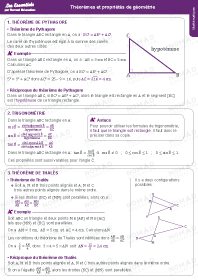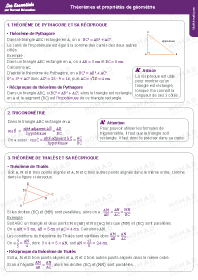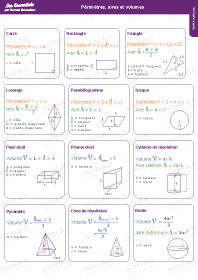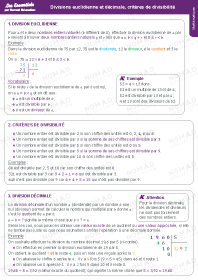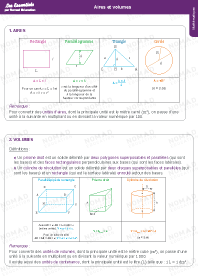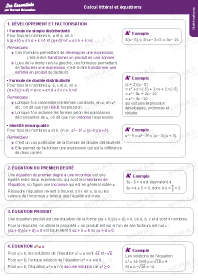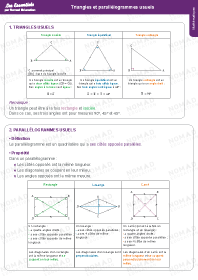Racine carrée
La racine carrée du nombre positif $x$, notée $\sqrt{x}$, est le nombre positif dont le carré vaut $x$.
Par définition, $\sqrt{x} \times \sqrt{x} = (\sqrt{x})^2 = x$.
Exemple : $5^2 = 25$ et $5$ est positif donc $\sqrt{25} = 5$.
Théorème de Pythagore
Dans le triangle $\mathrm{ABC}$ rectangle en $\mathrm{A}$, on a : ${\mathrm{BC}}^2 = {\mathrm{AB}}^2 + {\mathrm{AC}}^2$.
Le carré de l’hypoténuse est égal à la somme des carrés des deux autres côtés.
Application :
Dans un triangle $\mathrm{ABC}$ rectangle en $\mathrm{A}$, on a $\mathrm{AB = 3 \:cm}$ et $\mathrm{BC = 5\: cm}$.
Calculons $\mathrm{AC}$ :
D’après le théorème de Pythagore, on a ${\mathrm{BC}}^2 = {\mathrm{AB}}^2 + {\mathrm{AC}}^2$.
$5^2 = 3^2 + {\mathrm{AC}}^2$ donc ${\mathrm{AC}}^2 = 25 - 9 = 16$, puis $\mathrm{AC = \sqrt{16} = 4 \:cm}$.
Réciproque du théorème de Pythagore
Dans un triangle $\mathrm{ABC}$, si ${\mathrm{BC}}^2 = {\mathrm{AB}}^2 + {\mathrm{AC}}^2$, alors le triangle est rectangle en $\mathrm A$ et le segment $\mathrm{[BC]}$ est l’hypoténuse de ce triangle rectangle.
 Nouveau ! Découvrez Nomad'IA : le savoir de nos 400 profs + la magie de l'IA
Nouveau ! Découvrez Nomad'IA : le savoir de nos 400 profs + la magie de l'IA




